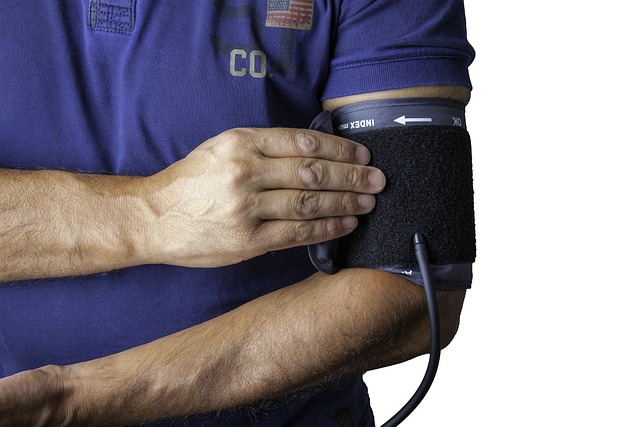
How do you know if you are in good health? Subjectively, the best indicator is your energy level. But, let’s go beyond how you feel subjectively. Are there any home monitors that can measure your health and help you achieve amazing health? The answer is most certainly, ‘yes’.
There are home tests and monitors that you can buy to track your health. Knowing your blood pressure and your blood sugar are two of the most important numbers you can and should track. Elevated blood pressure and insulin levels from too much sugar are the two biggest preventable risk factors for cardiovascular disease.
We recommend that everyone have a home blood pressure (BP) monitor and glucometer and will discuss these two here.
Blood Pressure Home Monitors
Most are familiar with blood pressure monitors. You likely have seen the ones you sit down at the pharmacy or grocery store. But there are home monitors too. They are relatively inexpensive – typically around $50. They are accurate, reliable, and easy to use and will store your BP readings.
BP monitors are very helpful for patients who are being started on blood pressure medication for the first time and those individuals who many need an adjustment in dose, or those who are trying to get off their BP medication after making the needed lifestyle changes.
BP monitors very helpful to guide decision-making in patients who suffer from white coat syndrome – individuals whose blood pressures are elevated when they see the doctor but tend to be normal at home.
What’s a Healthy Blood Pressure?
Traditionally, blood pressure is measured at rest and one should be sitting for 5 minutes quietly to obtain a valid BP reading. Blood pressure does and should fluctuate with activity both mental and physical.
I sometimes wonder if BP readings obtained during mental and physical activity might be more valid and a better predictor of risk for disease than a resting BP reading since we spend most of our waking hours doing one or the other. But, the resting blood pressure is the standard – obviously because it’s easier to get.
As you probably know there are two BP readings; the systolic blood pressure or the pressure when the heart is contracting, and the diastolic blood pressure or the pressure when the heart is relaxed and filling up with blood. The systolic BP reading is the top number and the diastolic is the bottom number.
Classification of Blood Pressure
- Hypertension: readings over 140/90
- Pre-hypertension: 120-139/80-89
- Normal: 120/80 or less
However, a meta-analysis showed that any BP reading above 115/75 is associated with increase risk of heart attacks and strokes with the risks increasing as BP rises. But, older people typically need higher BP readings for blood to reach vital organs. Recently recommendations for BP in individuals over age 60 have changed allowing for readings up to 150/90 before initiating treatment.
Glucometers and Blood Sugar
A glucometer is a monitor that measures you blood sugar. Once reserved for diabetics only, glucometers are being used more and more by non-diabetic patients. They are very helpful for individuals needing to lose weight.
Glucometers are very inexpensive and nearly free in some cases. But, you will need to pay for test strips and lancets (small needles to prick your finger) and those can be pricey. Manufacturers of glucometers have taken a page from manufacturers of razors that typically give away the razor, because they know you will need to buy the razor blades on an ongoing basis.
What is a Normal Blood Sugar?
Unlike blood pressure which is obtained at rest, we have knowledge of what a healthy blood sugar is at rest or what is called a fasting blood sugar and what blood sugar readings should be one and two hours after eating.
We’ve written plenty about elevated sugar – it’s unhealthy. Sugar triggers insulin release. High sugar and high insulin cause inflammation and oxidation and essentially lead to premature aging and accelerated organ failure.
The cutoff currently used for calling a fasting blood sugar “normal” is too high as it is still associated with risk for heart disease. You really want to be in the optimal range.
- Normal fasting blood sugar (after 8 hours of fasting) is 99 mg/dl or under.
- Optimal fasting blood sugar is 70 to 85 mg/dl
- Pre-diabetic is 100 to 125 mg/dl
- Diabetic is above 125 mg/dl.
Blood sugar can me measured after eating and this gives you a chance to see up close and personal how various foods affect your sugar level and that’s where having a glucometer can be helpful and provide a little fun as you can experiment with yourself.
The big take home message here is you want your blood sugar in the optimal range. At levels between 86-99 mg/dl you are still at increase risk of getting heart disease. And, at levels of 85 mg/dl heart disease has been shown to be reversible in some studies.
Glucose Tolerance Test
A standard glucose tolerance test can be done in which you measure your blood sugar after an 8 hour fast. You then consume 75 grams of a glucose drink and measure your blood sugar at one, two, and three hours after consuming the drink.
- Ideally, your fasting blood sugar should be 85 mg/dl or less.
- At one hour blood sugar should be less than 140 mg/dl.
- At two hours blood sugar should be less than 120 mg/dl.
- At three hours blood sugar should be back to baseline.
But, you can check your blood sugars at these time intervals following a typical meal and obtain a very good idea how a particular meal is impacting your blood sugar (glucose) control.
Blood pressure monitors and glucometers are two very inexpensive and valuable home monitors you should have. But, they do no good if you don’t use them. That’s the trick!
